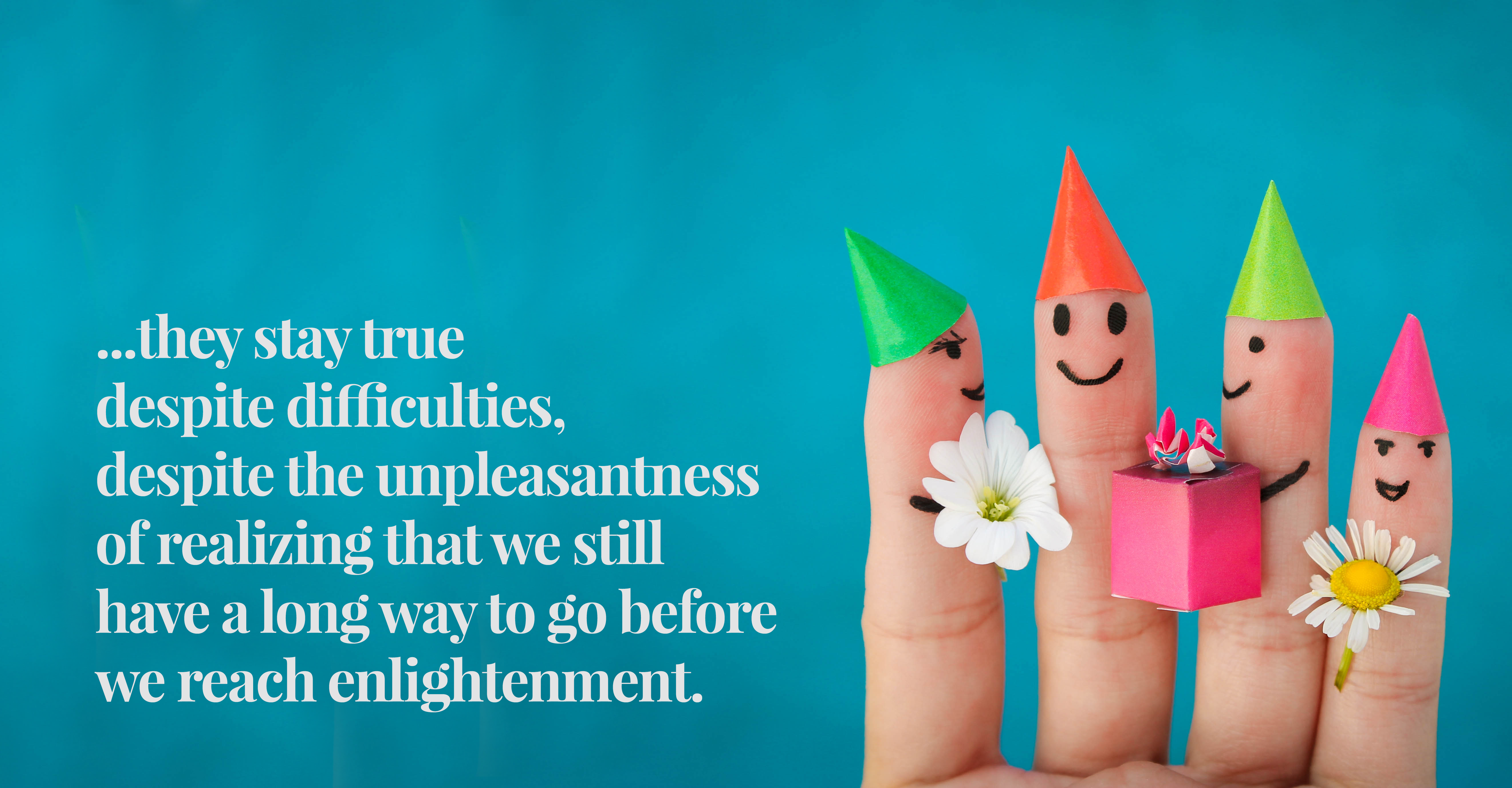My daughter and I usually have this series of movies to watch over the Yuletide break as a sort of fun, self-imposed tradition. This season, we decided to revisit another favorite of ours, the Avatar: The Last Airbender series, aka ATLA, from Nickelodeon. ATLA is set in a world where people have the capacity to bend elements to their will. It narrates the journey of the young Avatar Aang and his friends from the South Pole through the North Pole—enabling him to master all the elements as an Avatar should—and to his eventual victory over the tyrannical Fire Lord Ozai who wants to conquer the whole world. Along the way, with guidance from his tea-loving uncle Iro, fire bender Prince Zuko, Ozai’s banished son and, at first, the arch-enemy of Aang, goes through a difficult transformation as he tracks Aang and company, and eventually helps Aang master fire-bending, becoming his friend. With Aang and gang’s element-bending quest, as well as that of fire-benders Iro and Zuko’s, playing in my mind, I started thinking deeply about friendship. Are these people real friends? What IS friendship?

This might sound a little ridiculous to some people. Everybody knows what friendship is. Friendship is celebrated all the time! Just look at all the touching quotes about friendship one can find online! Woe is she who has not found one! But really, friendship is such a loose term that encompasses so many levels of relationships. There are the acquaintances, the cliques, the close friends, and those friends “in the inner” circle. The last one is often qualified as “true” friends. But what constitutes true friendship?
Most would say that true friendship is a friendship through thick and thin, and not just during “fair weather.” A friend once said of herself that she is my “bad-weather” friend because we are not the type who would hang out and have fun together—we never have time for that—but when things go bad, I usually go to her to express my disappointment in people. (Actually, I go to her and tell her how right she has been about people. Lessons learned.) I am grateful for her, and I am amazed that none of the usual conditions of friendship—hanging out, constant communication, etc.—is required for us to stay friends for decades now. So the things usually considered as necessary for true friendship turn out to be inessential in this case. Moreso, because no amount of hanging out and closeness were able to save my friendship with my…well…ex-friends. So what makes up true friendship?
Aristotle, writing in 3rd century BCE in Ancient Greece, thought that friendship is of three types: one of utility, one of pleasure, and one of virtue. Utilitarian and hedonist friendships are easy to come by. I think this is how we usually measure the “true-ness” of friendship. One is a true friend because she was there when we needed someone. One is a true friend because she has the same likes and dislikes and we can be our “true” self with her. She allows us to be who we “really” are and lets us be. Rarely do we find appreciation for friends who keep us on our toes, who show us our limitations, and who encourage us to be better than ourselves. These people we usually shun. They are not fun. They are “not accepting of who we are.” They are not our friends. Aristotle disagreed. He thought that the best type of friendship is the one of virtue: people who selflessly desire the good and betterment of the other, whose main desire is to keep friends on the path of virtue as they themselves continue to train and practice being virtuous.
Earlier than Aristotle, however, in 5th century BCE, the Buddha had already taught about virtuous friendship: kalyana mittata—spiritual friendship. On one occasion as told in the Upaddha Sutta when Ven. Ananda commented that having admirable people as friends is half of the holy life, the Buddha replied that it isn’t so. Instead, it is the whole of the holy life. By having “admirable friendship (kalyanamittata), admirable companionship (kalyanasahayata), admirable camaraderie (kalyanasampavankata),” one is led to the cultivation of the dharma, the 8-fold path. In the Sambhodi Sutta, the Buddha teaches the same: that having virtuous friends helps in one’s cultivation of a virtuous life. One will more easily maintain sobriety because these friends will often talk of the righteous path, and of observances to keep in order to achieve freedom from the afflictions of the world and thus, become enlightened.
The Meghiya Sutta illustrates this more concretely. Ven. Meghiya insisted on meditating in a beautiful grove even though the Buddha would rather he didn’t. When finally allowed, Ven. Meghiya realized that he couldn’t meditate properly and was plagued by ill thoughts, sensual pleasures and violence. When he confessed this to the Buddha, the latter explained to him the value of being surrounded by spiritual friends (kalyana mitta). Friends of virtue will always speak of the dharma, encourage the contemplation of compassion, and teach mindfulness. They will help in one’s journey towards understanding the nature of the world and eliminate illusory views about it that cause suffering.

Now these don’t sound like the “true” friends that are usually sought after. These aren’t friends who would hang out and allow us to be just the way we are. On the contrary, these are friends who would push us to be better than we are. They will not listen to our ranting about our unpleasant experiences and allow us to harbor ill will because of them. They will show us how to adjust our views, how to change ourselves so that we do not suffer what we suffer anymore. They would be concerned with our spiritual development rather than stay with us during happy hour drinking our woes away. Of course, it does not mean that admirable friendships are all devoid of utility and pleasure. But the latter comes because of the shared effort to cultivate virtue. These friendships do not end because they are no longer useful or no longer pleasurable. On the contrary, they stay true despite difficulties, despite the unpleasantness of realizing that we still have a long way to go before we reach enlightenment.
Unfortunately, our ego-centered lives would find this boring. This is not the kind of friendship we want. Yet, if there is any true friendship at all, would this not be the truest of all? When friendship is about righteousness and spiritual release from suffering, would it not stand the test of time because it is not dependent on utility and shared pleasures?
So I think of Avatar’s Aang, Katara, Sokka, and Tof, and of Iro and Zuko. Theirs have not been easy friendships in the ordinary sense of the term of always having fun and allowing one another to be “just the way they are.” But they have fought together against the worst enemy of all: one’s self. Their transformations were effected by their common struggle to fulfil their full potential. It was quite a struggle, but they all pulled through, and in the end, transcended each of their own selves. I think of my own friends who are not always with me but who, in the few times that I am with them, remind me of the dharma and allow me to speak of shared spiritual goals. They trigger in me self-reflection and allow me to remember the value of gratitude and humility. In day-to-day busyness they recede into the back of my consciousness and I get caught up in what and who are immediately around me, demanding my attention. But in the quiet of my aloneness, I get the chance to consider myself lucky that I have them in my life, although we are quite different in the way we are.
Admittedly, this is not the popular sense of friendship people think about. It is rare because it is often difficult and therefore does not usually merit the term, “friendship.” But here at the Kalyana-mitta Meditation Center, this is what we aspire to do, and to be.
A bodhisattva’s practice is to cherish more than our bodies
Our hallowed spiritual mentors, to whom,
By entrusting ourselves, our faults come to deplete
And our good qualities come to expand like the waxing moon.
—from Thirty-seven Bodhisattva Practices, by Togmey-zangpo[1]
[1] Admirable Friendship (2012, Vernon, CT: Phap Hoa Buddhist Temple), p. 33.
Leni Garcia, MA, PhD works as a professor of Philosophy but lives as an artist-advocate for creativity, gender- and religious-inclusivity, pluralism, and environment care. When not trying to form deep connections with gentle, sentient beings, she pushes paint on paper, dances, and recycles odds and ends that can be recycled. Her favorite term-break activity is marathon-watching movie- and cartoon-series with her daughter.
